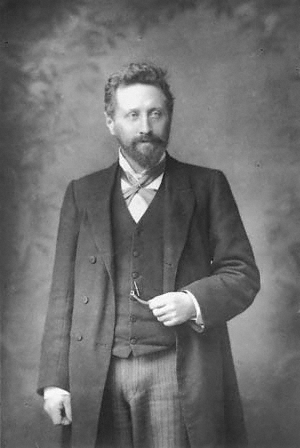William Edward Ayrton facts for kids
Quick facts for kids
William Edward Ayrton
|
|
|---|---|

William Edward Ayrton
|
|
| Born | 14 September 1847 London, England
|
| Died | 8 November 1908 (aged 61) London, England
|
| Citizenship | British |
| Awards | Fellow of the Royal Society Royal Medal (1901) |
| Scientific career | |
| Fields | physics, electrical engineering |
| Academic advisors | The Lord Kelvin |
William Edward Ayrton (born September 14, 1847 – died November 8, 1908) was an English physicist and electrical engineer. He was a very important scientist who helped develop many electrical tools and ideas. He was also a Fellow of the Royal Society, which is a big honor for scientists.
Contents
A Scientist's Journey
Early Life and Learning
William Edward Ayrton was born in London, England. He went to school at University College School and then University College, London. Later, he studied with a famous scientist named Lord Kelvin in Glasgow. Lord Kelvin was a pioneer in electrical science.
Working in India
In 1868, when he was 21, Ayrton went to Bengal, India. He worked for the British Indian Government's Telegraph department. There, he invented a clever way to find problems in telegraph lines. This invention was very helpful for keeping the communication network working across long distances. After his time in India, he returned to England and got married.
Adventures in Japan
In 1873, the Japanese government invited Ayrton to teach in Tokyo. He became a professor of Natural Philosophy and Telegraphy at the new Imperial College of Engineering. He helped design the college's labs and classrooms. Ayrton is also known for bringing the electric arc lamp to Japan in 1878. This was a big step forward for lighting in Japan.
Back Home in London
After his time abroad, Ayrton returned to London. He became a professor of applied physics at Finsbury College. Later, he became a professor of electrical engineering at the Central Technical College in South Kensington.
Ayrton wrote many scientific papers, often with his colleague, Professor John Perry. They invented many useful electrical measuring tools. These included the spiral-spring ammeter (which measures electric current) and the wattmeter (which measures electric power).
They also worked on making railway electrification better. They created a dynamometer, which measures force or power. They even made the first electric tricycle! Ayrton also did important work on the electric searchlight, which is a very powerful light used to see far away.
William Edward Ayrton passed away in London in 1908. He is buried in Brompton Cemetery.
His Family Life
William Ayrton's family was full of interesting and talented people.
In 1872, he married his cousin, Matilda Chaplin Ayrton. Matilda was part of the "Edinburgh Seven." This was a group of brave women who fought to be allowed to study medicine at British universities. She was a very important figure in the fight for women's rights in education.
William and Matilda had a daughter named Edith Ayrton. Edith grew up to be a feminist and a writer. She married a writer named Israel Zangwill.
After Matilda passed away, William married Hertha Marks Ayrton in 1885. Hertha was also a brilliant scientist. She helped William with his research and became famous for her own work on the electric arc. William supported Hertha in her career. She became the first woman member of the Institution of Electrical Engineers. The Royal Society even gave her a special award called the Hughes Medal in 1906.
William and Hertha's daughter, Barbara Ayrton-Gould, became a Member of Parliament (MP) for the Labour Party. Their grandson, Michael Ayrton, was a well-known artist and sculptor.
William and Hertha also helped take care of the artist and suffragette Ernestine Mills after Ernestine's mother died.
Awards and Recognition
William Edward Ayrton was a highly respected scientist.
- In 1881, he was chosen as a Fellow of the Royal Society. This is a very high honor for scientists in the United Kingdom.
- In 1892, he became the president of the Institute of Electrical Engineers.
- In 1901, the Royal Society gave him their Royal Medal for his important scientific work.
Images for kids
See also
- Henry Dyer
- John Milne
- Anglo-Japanese relations
- Ayrton shunt


